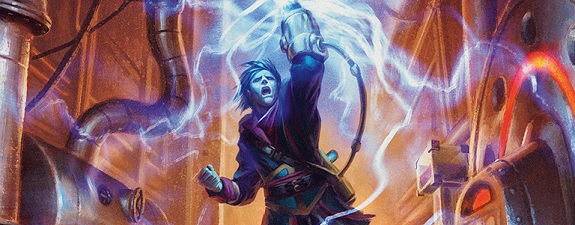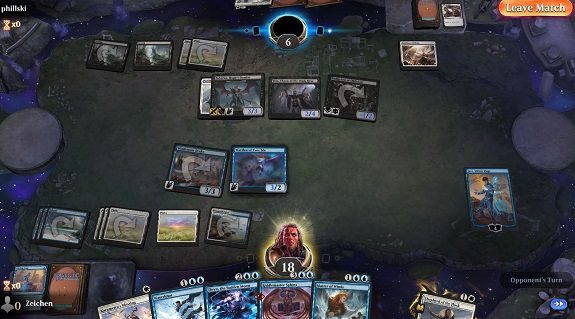
The scientific method, defined in Wikipedia, is an empirical method of acquiring knowledge that has characterized the development of science since at least the 17th century. It involves careful observation, applying rigorous skepticism about what is observed, given that cognitive assumptions can distort how one interprets the observation.
It involves formulating hypotheses, via induction, based on such observations; experimental and measurement-based testing of deductions drawn from the hypotheses; and refinement (or elimination) of the hypotheses based on the experimental findings.
The overview of this method starts with making the hypotheses, based on knowledge obtained while formulating the question, that may explain any given behavior.
Creating the Hypothesis
In the case of metagaming a Magic: the Gathering format, it is statistical or based on the numbers of the top decks in the format. It is based on the results of the previous major tournaments, which recent ones were mostly done online via Magic Arena platform. Each of these events has a tally on the deck archetypes and their number in the attendance and also can be sorted depending on the % of a top finish in the tournament.

That can then be the basis of the hypotheses, for example, “The most powerful deck in Standard is Mono-Red Aggro.” That is answering the question “What is the most efficient and powerful deck in the current Kaldheim Standard?”
Prediction
The next step is prediction and it involves determining the logical consequences of the hypothesis. In our example here, we can have predictions like “The metagame will adapt to this matchup by having more sideboard cards against Mono-Red.”. In this case, the meta at most times works to counter the most popular deck. It also depends on the variety of decks, if dealing with the first place deck in the previous major tournament might affect the sideboard plan on other top deck matchups.
You can come up with at least two or three predictions and choose which one is most likely to happen.
Testing
The next step may require a lot of your time but it will produce results. Testing or playtesting in Magic: the Gathering lingo is needed to see what works or does not work. Scientists called these as conducting experiments. You need to know the efficiency against the expected deck archetype matchups in the metagame. It is not just placing the best generals err creatures in your deck and expect them to do their job 100 percent.
You can list down let say, the top 5 decks as of the results last weekend. It will already take you a lot of time to playtest each of those matchups but having a playtest buddy is the best way to solve it. The good thing now in Magic Arena is one account can have too many types of decks so the switching is just a few clicks away. You just needed to set your playtest schedule. Also, an advantage is that it is now available to play on mobile so basically you can change venue to your convenience and still play Arena.

Find a buddy that is a long-time grinder in Arena as they will surely have all the decks that you need to playtest with. If not, having random matches also helps to get you a feel on the flow of the deck, like what starting 7 to keep, the sequence of creatures to play, etc.
Analysis
The last part of the scientific method is analysis. By Wikipedia definition, “This involves determining what the results of the experiment show and deciding on the next actions to take. The predictions of the hypothesis are compared to those of the null hypothesis, to determine which is better able to explain the data.”
For the playtest analysis to be done, you need to take note of each of the match results. Be detailed as much as possible, such as noting the highlights of each match. What creatures made you win the game? What relevant scenarios turned the game in your favor? What cards on the sideboard are effective or not after Game 1? Each of these should be considered and noted. I suggest having an Excel sheet of each of the deck archetypes for easy sorting.
Of course, this takes a lot of time and effort but you would learn how each other deck archetype works, what their strengths and weaknesses are, and how you would sideboard against them.
Conclusion
The scientific method is best explained in these statements: “It is not a single recipe: it requires intelligence, imagination, and creativity. In this sense, it is not a mindless set of standards and procedures to follow, but is rather an ongoing cycle, constantly developing more useful, accurate and comprehensive models and methods.”
In our quest to produce better results in Magic: the Gathering tournaments, even in the Standard format, we needed to be scientific in playtesting for the best deck. If it takes trial and error, then we had to do be better in the next local or major tournament. We test our hypotheses. We learn from the previous one, fix those mistakes whether in the gameplay decision or sideboard list and adapt it in our next match.
That is a wrap. Thanks for reading and until the next blog post.
References:
https://en.wikipedia.org/wiki/Scientific_method#Overview
https://www.magic.gg/decklists/traditional-standard-ranked-decklists-march-29-2021
